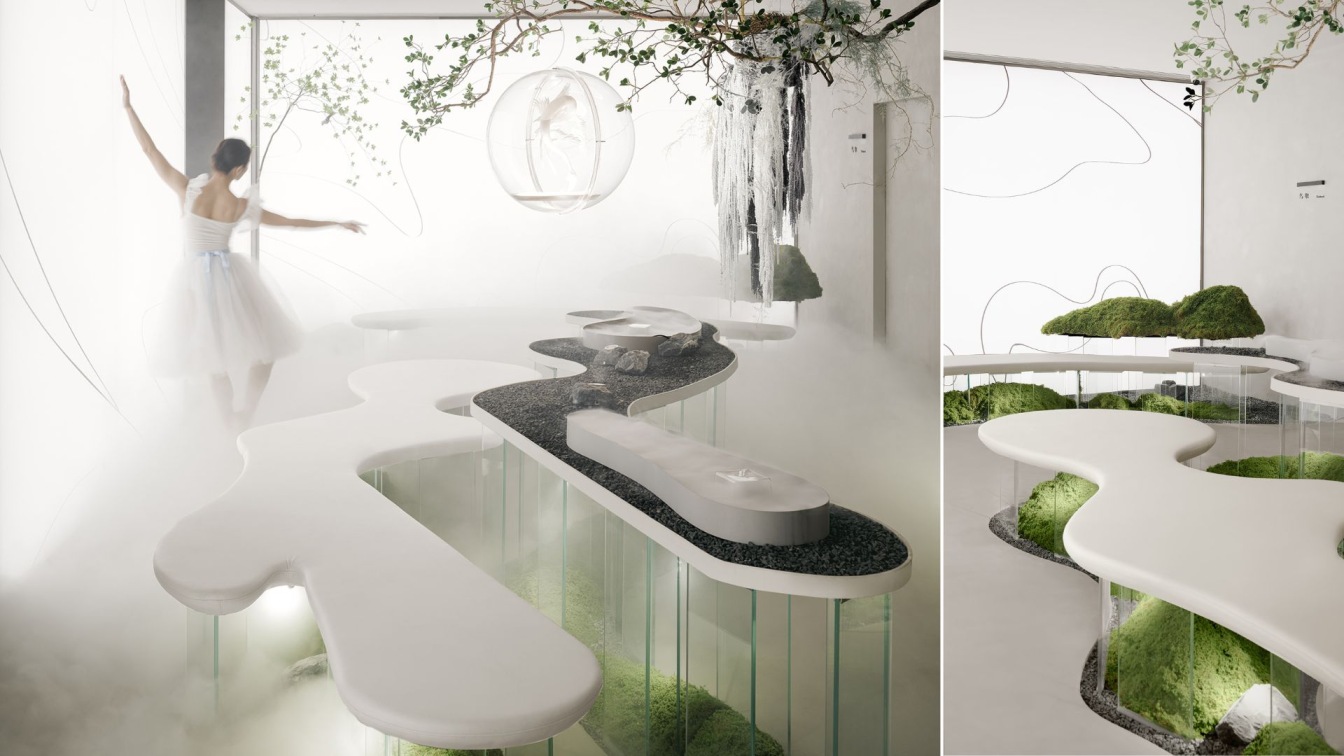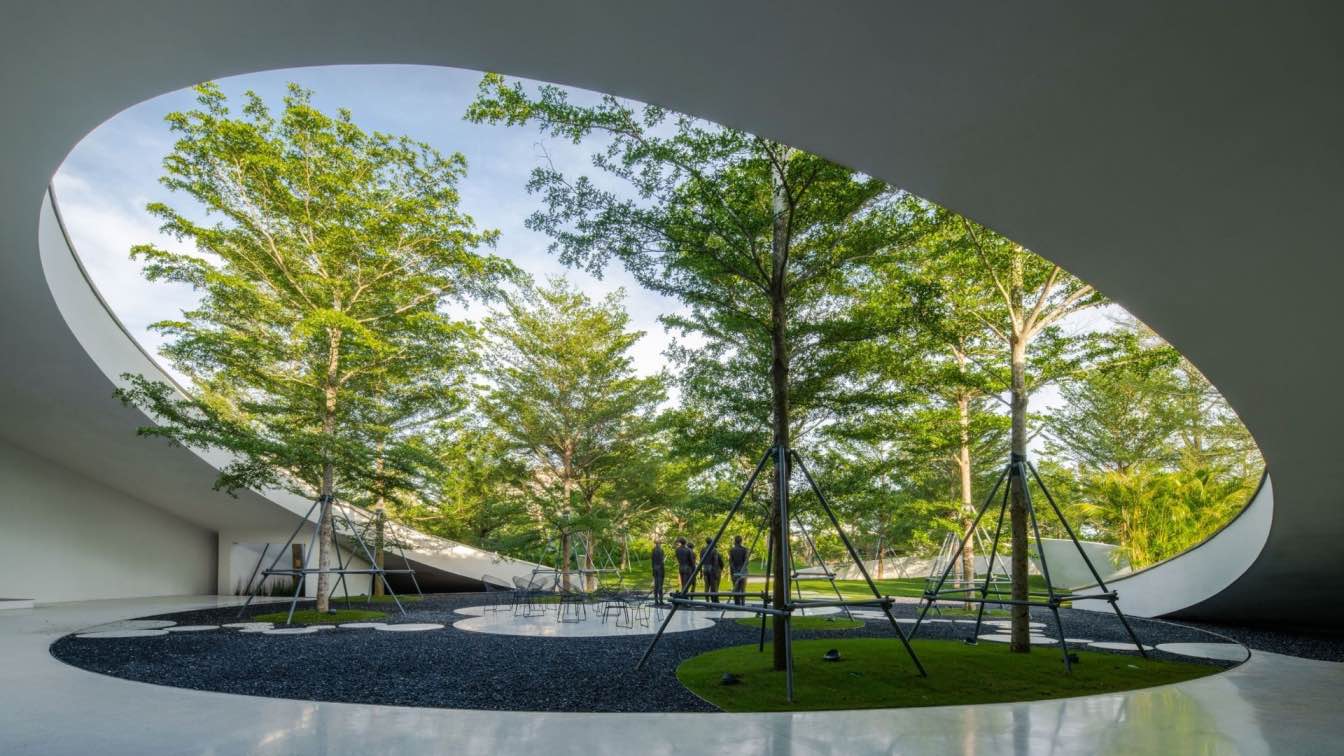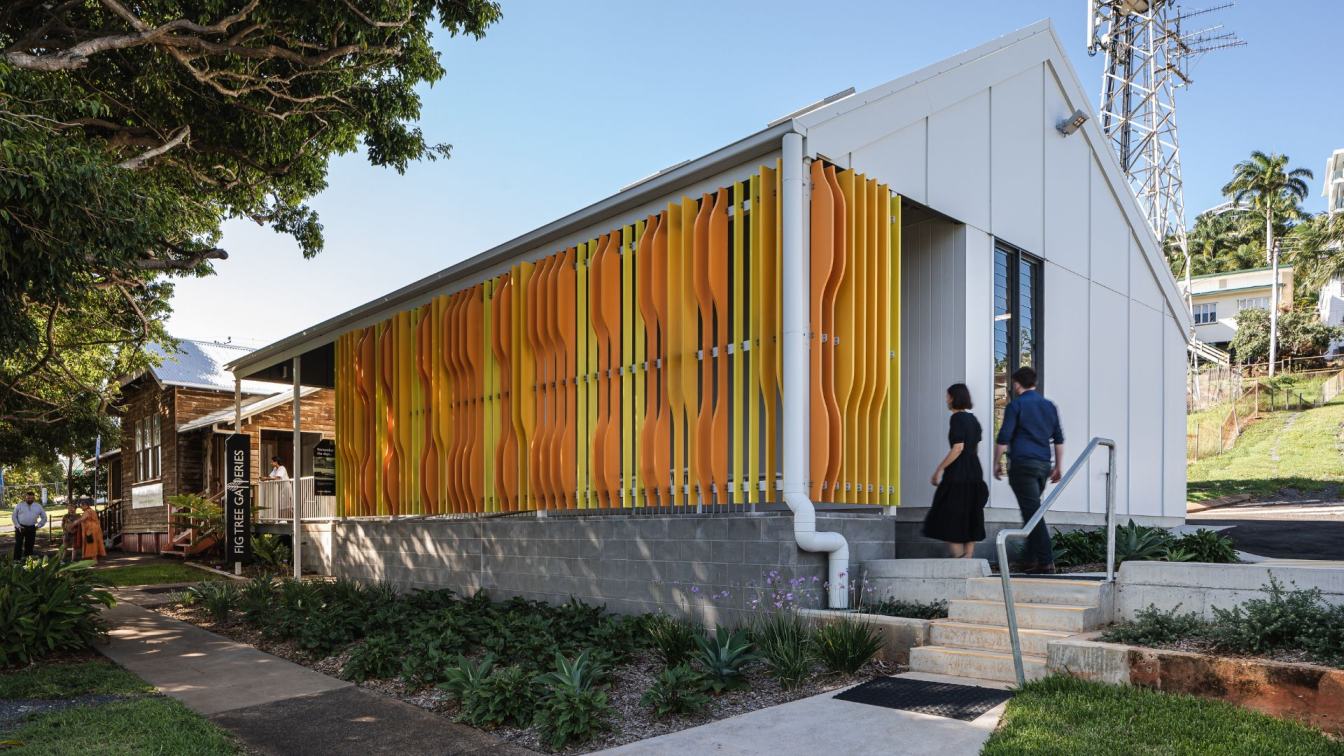Xiamen TALES GALLERY | Travel across time and space thousands of years ago
Qian Hu Zhi Wu in Xiamen aims to create a tales gallery that integrates art and immersive experience, bringing players the beauty of regret in the intertwined time and space. CUN PANDA NANA has successfully implemented this concept with a unique creative design. Between light and shadow, the design injects extraordinary imagination and creativity into space, allowing players to start a new journey of exploration between the virtual and reality.
Gate of time and space
"Well begun is half done."
Stonehenge is taken as the prototype to open the interlaced space leading to the new world and to build a dimension door of virtual and real, where time and space become still and twisted and the geometries are distributed and arranged to form a collection of numerous small worlds.
The floor is the only main light source, which emits different lighting effects according to different scenes. As the light source penetrates the hollowed-out circular holes, the entire structural frame is clearly visible and the beauty of concise line comes into being, allowing the players to experience the collision of reality and fantasy in the interlaced, interspersed, and overlapping visual space.
Tree of regret
While the sight is still wandering, the tree of regret appeared in an instant.
Surprising and unexpected sensations followed, it is a big tree penetrating the ceiling. Where does it lead to - perhaps to another parallel world, attracts infinite reverie. The futuristic shape surrounds the tree, and the combination of nature and technology is particularly stunning. The lighting installations like vines and beasts are entwined so that the abstract artistic effect is instantly achieved.
With simple lines, pure facades, and delicate and smooth materials, the exhibition area as the first impression has successfully created an immersive experience atmosphere with ease.
Time corridor
In the corridor, light and mirror materials are adopted to create multiple senses of space, where the infinitely extended end has irresistible attractions. The past, present, future, dream, and reality are interspersed and alternated to indicate an unknown ending.
The mirror design continuously extends the spatial dimension and increases the pressure due to the narrow passages. At the same time, it connects the storage, dressing, and makeup areas. The smooth circulation design stimulates the player's sensory experience to get into their stride.
Sand dune of annual rings
"Spring shoots burst from the moss on the steps, and summer shade shades the sedge-covered path."
Entering the waiting area, it is as if one has entered a natural paradise of no one. A touch of the coolness of summer comes into the pure white, which is exquisite and pure, just like the calm before starting a story.
The sand dune-inspired seat is matched with transparent acrylic to create a floating effect, and the meandering shape is like the traces left by the invisible wind. The green moss grows in the sun, and the natural undulating shape brings more vitality into the space, which forms a delightful contrast with the swaying bamboo shadow. In such a vibrant, fresh, and warm space, it is very pleasant to be there.
The tree trunk breaks through the white wall, reflecting the metaphysical space aesthetics, forming a poetic connection with the tree of regret. The white whole LED wall is printed with the shape of sand dunes, echoing with moss and seats.
With extraordinary space design aesthetics, CUN Panda interprets the stories of Bai Ze and Qing Niao in a moving way, so that players can feel the aesthetics of regret in the unique space and build a social space recognized and loved by young people.
Cai Xuanna | NANA
Space Designer / Partner of CUN PANDA ARCHITECTS
As a partner of CUN PANDA ARCHITECTS, designer Ms. Cai Xuanna has an educational background in international finance and experience as the INShop fashion brand manager. These experiences have transformed her sensitivity to the new business era and her spatial aesthetic perception skills into an overall way of thinking about business planning. She is good at integrating products and living space as a unified and coordinated whole from the perspective of the operator, developer, and designer, and meeting the market needs.
To promote clients’ brands by breaking traditional design thinking, she blends fashion aesthetics and design perception perfectly to achieve high-quality design works from a business point of view into the current market, and through a global fashion vision. Based on the design experience of over 100 companies and customized design methods, the contents of corporate strategy, brand culture, and other values are sorted and implanted in the early stage of design. By analyzing the consumption trends, her team finds the focus of project design to build an appropriate supply and demand relationship, build the core competitiveness in the market, and create added value.
Lin Jiacheng
Partner of CUN PANDA ARCHITECTS
Lin Jiacheng, born in Fujian in 1984, is an interior architect and co-founder of CUN PANDA. He is affectionately known as "Panda Daddy" by the media because of his cute childlike appearance. As a master of children’s space design, he is the first designer who perfectly integrates the parenting concept of Professor Wassilios Emmanuel Fthenakis, the "Father of German Early Childhood Education", into the Chinese early childhood space. His works have won unanimous praise from the Chinese and German design industries.





